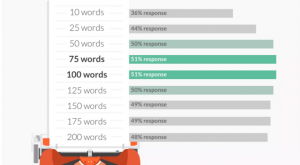Some SEO professionals may advise you not to bother chasing rankings for competitive keyword terms, but columnist Stoney deGeyter believes you can build your authority for these keywords over time by focusing on the long tail.

If you have a relatively new or low-authority website, then you know how difficult it can be to rank for high-volume, short-tail keyword phrases. Heck, any competitive keyword can pose a challenge, even for well-established sites.
I often hear experts talk about going after the low-hanging fruit of keywords. “Forget about the short tail,” they say.
I agree that that going after the low-hanging fruit is a good strategy, but not at the expense of those highly competitive phrases that will drive some great traffic to your site. Rather, it’s that low-hanging fruit that paves the way to ranking for those more competitive phrases.
Very few searches are truly unique
When it comes to search terms, there isn’t a whole lot new under the sun. Google says that 15 percent of all queries they get have never been used before, but that doesn’t mean it’s unique in the true sense of the word. Let’s assume, for example, that neither of the following searches has ever been entered into Google:
- how to eat a lemon without cringing
- how to eat a lemon without making a face
Are either of these terms really unique? Well, according to Google autocomplete, they are relationally similar to these:

And that tells us that even if my two made-up phrases fall within Google’s 15 percent of “unique” queries, we can see that it’s only the particular query string itself that’s unique, not necessarily the sentiment behind it.
And it’s that intent that gives us a goldmine of optimization opportunities.
Optimize for topics, intents and desires
Search any given topic, and you’ll uncover hundreds, sometimes thousands, of keywords. Those keywords represent different things searchers want to know about that topic. One look at a 100+ keyword list and it’s easy to see why you can’t possibly optimize a single page for every (relevant) keyword on a given topic.
This is where you need to segment keywords into groups, each group representing a similar intent. Good SEO and usability dictate that each intent requires a unique page of content to satisfy the searcher’s needs.
Let’s look at a simple set of short-tail phrases:

20,200 monthly searches, according to Moz
According to keyword volume data from Moz, these two phrases alone garner over 20,000 searches per month. And while they may not be the most competitive keywords you can find, they’re important to this industry — which does make them competitive.
But that set of keywords spawns other keywords with differing intents:

The green group is easily optimized on the same page of our core terms. As for the rest, if you do the quick math, the total monthly search volume represents only about 10 percent of the volume of the main group. But this is a small sample — four groups out of dozen grouped possibilities. Add in the rest of the researched keywords, and you get much closer to the 20K number of the core terms.
Breaking out your short-tail keywords into related groups of long-tail keywords makes for some good keyword targeting, provided you have (or can create) the pages and content for them.
Don’t throw out the short tail
Many people may tell you to ignore the short tail. It’s competitive, too difficult, too costly and so on. And, yes, those are all valid points. But the key is not to focus on the short tail exclusively, but rather to use the long tail to build up relevance for the short tail.
And, in truth, this is a rather simple process. Let me introduce you to a little thing I call “Optimize the Long Tail.”
In my process, you want to optimize not just for some of the long-tail phrases — you want to optimize for all of them. Find all the keywords in a given topic that have similar meanings, group them together, and find or create a page to optimize.
Another quick example: Say you find a few keywords for your product with the following qualifiers: discount, clearance, sale, closeouts, surplus, cheap.
You see a pattern to those? They all have similar meaning, which means they can be optimized together. Simply build a page where you put all your discounted stock for quick sale.
But no discount page would be complete without a link back to your main product page. After all, if the item they want isn’t discounted, they may just go ahead and buy it at full price. So add in your text link to the short-tail optimized page.
And then do it again with other keywords of similar intent. And then again, and then again, and then again.
In fact, you may want to optimize out one entire short-tail topic page before moving on to your next short-tail topic. This might mean five, 10, or even a couple dozen pages, but each page optimized for a similar-intent long-tail group provides a link and power back to the short-tail keyword that you want to rank for.
Patience is key
It’s important that in all of this, you exercise patience and have realistic expectations. Optimizing a dozen long-tail phrases won’t automatically get you traction on the short-tail phrase you really want. You still have to build authority to all the pages. Without authority, you’re just not going to rank for those short-tail phrases, regardless of how well you’ve optimized.
But optimizing out all those long-tail pages is great for authority-building. Get those pages to rank on their own merits, and with each page addition, you’ll be building on top of the existing authority you have.
You still have to market and promote and provide value. (Don’t ever forget to provide value!) That may take years, but eventually you’ll see your efforts pay off.
And the beauty of it is, while you’re optimizing long-tail in order to achieve short-tail, you’ll see the traffic and sales build. Even those less frequently searched long-tail phrases can add up to 50 to 100 percent of the traffic you’ll get from the short-tail phrases. And that’s what makes long-tail a crucial part of your strategy. They may drive less traffic per term, but they’ll drive just as much traffic in total.
[Article on Search Engine Land.]
Some opinions expressed in this article may be those of a guest author and not necessarily Marketing Land. Staff authors are listed here.
Marketing Land – Internet Marketing News, Strategies & Tips
(31)







